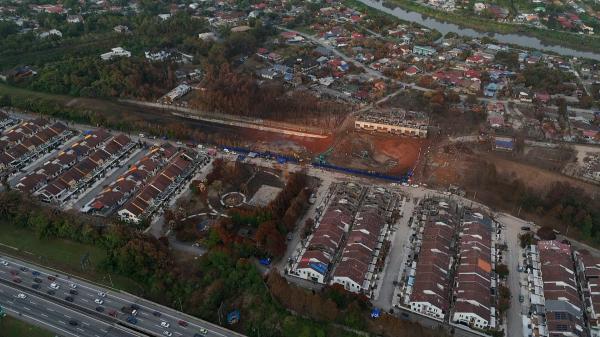By Amar Shah Mohsen
SHAH ALAM, July 8 — Menteri Besar Dato’ Seri Amirudin Shari has dismissed claims that the April 1 Putra Heights gas pipeline explosion was caused by unauthorised excavations.
He told the Selangor State Legislative Assembly that findings from police and technical investigations ruled out groundworks as the cause of the explosion, noting that a monsoon drain pipe located above the gas line was intact.
“According to police investigations and confirmations by the Minerals and Geoscience Department and the Occupational Safety and Health Department, the works did not affect the gas pipeline, as the monsoon drain pipe situated above the gas line remained untouched and intact.
“Some may question why the construction of the monsoon drain pipe was approved over the gas pipeline’s right-of-way (ROW) area.
“Based on my check with the local authority, the residential housing and the construction of the monsoon drain pipe — which measures 4.2m in diameter — were carried out around 2008 and 2009, before the establishment of the One-Stop Centre in 2010.”
Amirudin said this when tabling a special motion under Standing Order 13(i) of the state assembly.
He said the ROW refers to government-owned land with gas pipelines, which must be prioritised for Petronas for construction, access, and related works. Any such activity requires prior application and approval from Petronas.
However, while the area between Taman Putra Harmoni and Kampung Kuala Sungai Baru — which was affected by the blast — is generally referred to as an ROW, Amirudin explained the land is privately owned by Petronas Gas Bhd (PGB).
He added that claims suggesting the developer building the shoplots in the area had carried out illegal work are inaccurate, as the company had obtained approval from PGB on March 20 to proceed with the project.
“PGB also required the developer to comply with safety conditions set by Petronas during the pre-construction meeting before the work permit was issued.”
On allegations that the local council had compromised on safety requirements when approving the planning permission for development in areas under Petronas’ supervision, Amirudin clarified the buffer zone in Putra Heights adhered to regulations.
He added that the designated buffer zone there measures 66ft (over 20m), six more than PGB’s requirement of 60ft.
Earlier in his motion, Amirudin provided details to the state assembly on the findings of the criminal and technical investigations, led respectively by the police and DOSH, on the Putra Heights gas pipeline explosion.
On June 30, Selangor police chief Datuk Hussein Omar Khan said the police probe confirmed no evidence of foul play, sabotage, or negligence in the events leading up to the blast.
Instead, DOSH petroleum safety division director Husdin Che Mat revealed the incident was a result of a structural failure caused by environmental and geological factors.
Husdin said forensic analysis found a stress line formed across the diameter of the pipe due to external factors, developed by long-term underground pressure and soft soil conditions.
Investigators also observed signs of metal fatigue, with a fracture traced to the pipeline’s welding joint along the pipe, which could have created friction and subsequently sparked an explosion.




